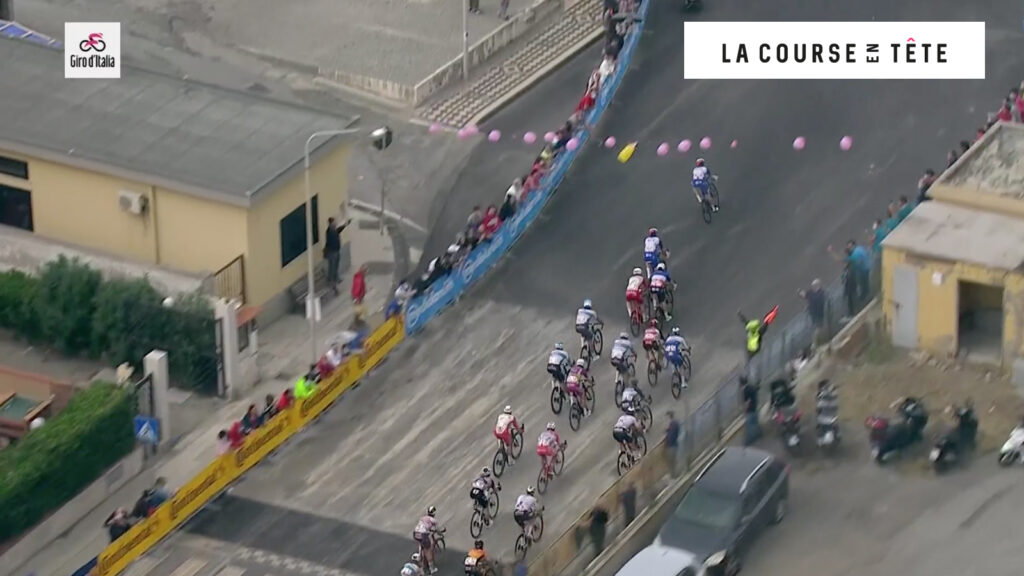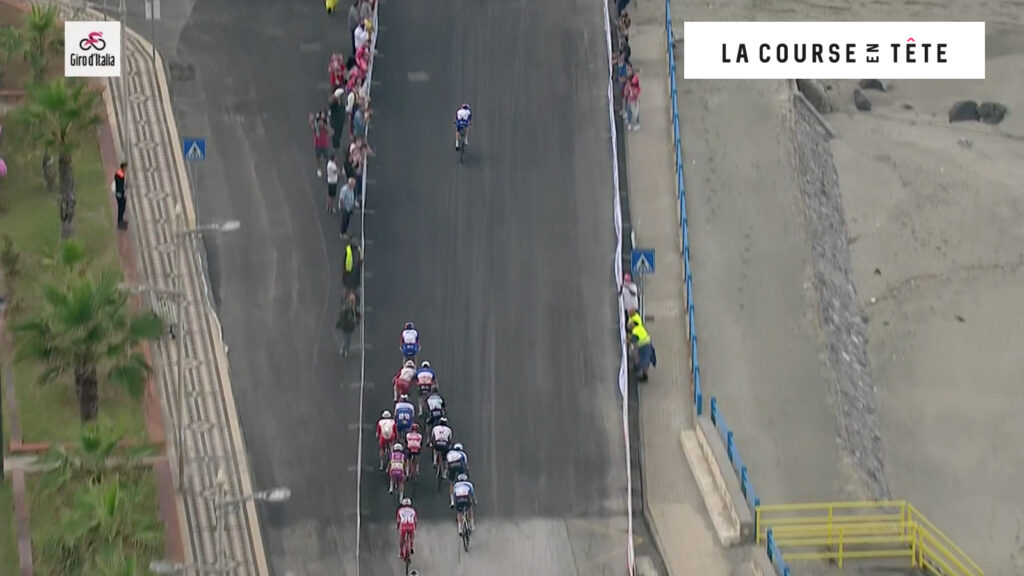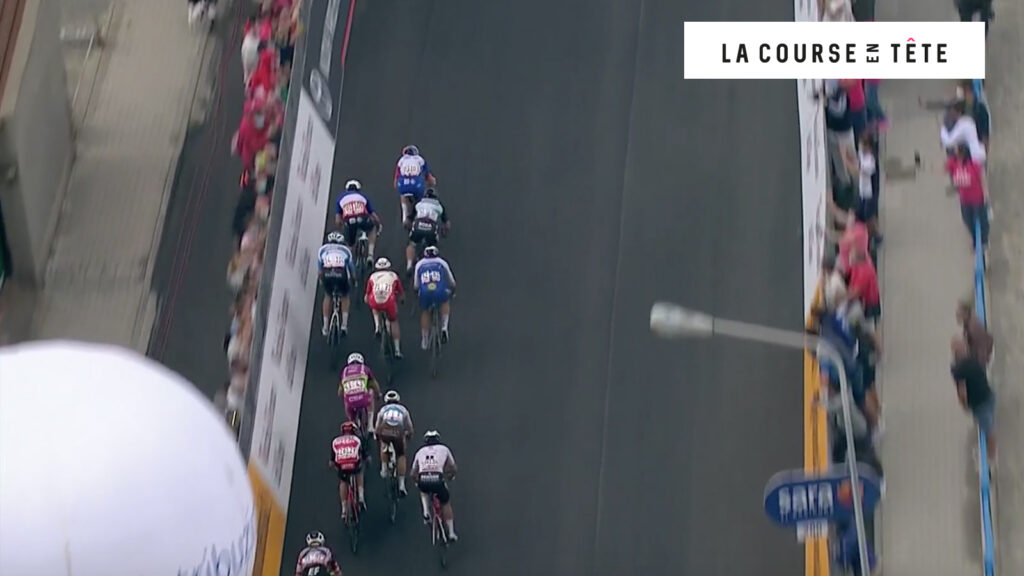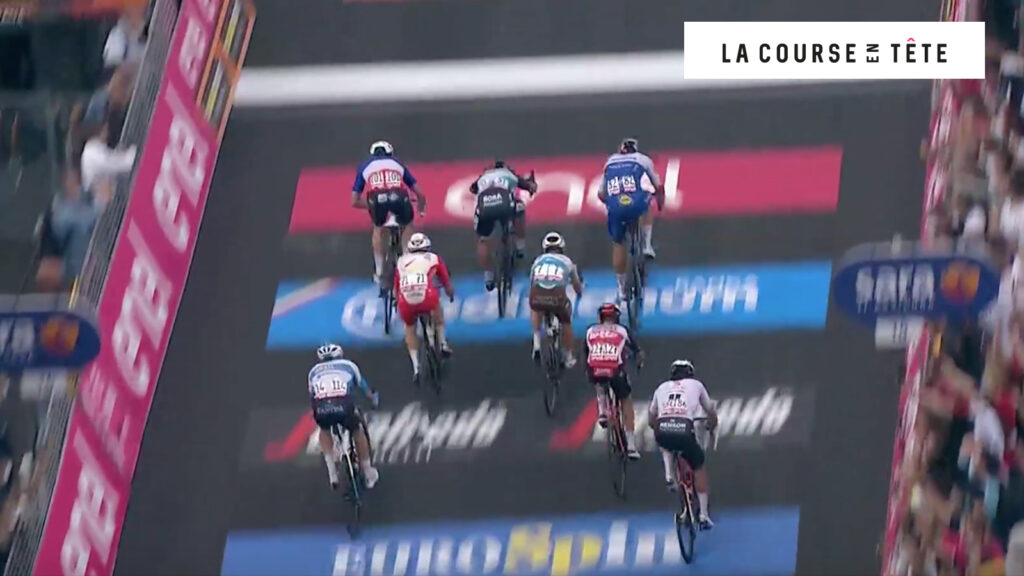Race analysis by Nick Bull | Main photo by SWpix.com / Cor Vos
Even in the seething cauldron of sprinting hostility, Arnaud Démare comes across as being genuinely likeable. It’s possible that he’s underrated, given that his palmàres includes Milan-Sanremo, Milano-Torino, three French titles and stage victories in the Tour, Giro, Paris-Nice, Dauphiné and Suisse.
I feel sorry for him, too, given that he has not been selected for his home Grand Tour these past two years, a decision that looked especially ridiculous in late August when Thibaut Pinot had to drag himself up off the Promenade des Anglais twice during 2020’s opening stage. Even the positive spin that Démare put on his non-selection for the Tour when his season’s schedule was announced all the way back in January was short-lived: he planned to ride the Vuelta with the goal of completing his Grand Tour victory set. Instead he’s ending his readjusted campaign at the Giro, having won eight sprints and the Tour de Wallonie GC in the space of 25 days in August.
Regardless of recent form, Démare is typically a slow starter in Grand Tours. Groupama-FDJ DS Marc Madiot told L’Equipe TV after the finish that he often needs “two or three sprints to settle” into them. Yet the Beauvaisien is already off the mark in Italy after winning Tuesday’s first sprint stage alongside the Tyrrhenian Sea by the smallest of margins. This success in the windswept Villafranca Tirrena is the earliest he has won in a Grand Tour, beating his victory in Vittel during the 2017 Tour by a day (in what was the second bunch sprint of that race). Two years ago in France he won stage 18 having twice placed third, as well as fourth and fifth, beforehand. His maiden Giro triumph, 10 stages into last year’s race in Modena, came after five top-10 stage finishes.
70KM TO GO
Normally third category climbs wouldn’t scare too many sprinters when they’re in their Grand Tour form, but the Portella Mandrazzi isn’t a typical third category climb. Measuring 12.4 kilometres long and averaging a gradient of 5.2%, it would have made for a decent stage finish in its own right. Under pressure from BORA-hansgrohe’s pace at the head of the peloton, Elia Viviani (Cofidis), Fernando Gaviria (UAE-Team Emirates) and Álvaro Hodeg (Deceuninck-Quick Step) were all distanced by the top of the climb, which came a little over halfway into the stage. “We put in a big effort to either drop the sprinters or at least make the race hard. Nearly all of the sprinters were dropped, except Démare and [Michael] Matthews,” said BORA DS Jan Valach.
Viviani, who is still bruised after crashing approaching the intermediate sprint during Sunday’s second stage, made it back to the peloton with 22 kilometres after some notable assistance from team-mate Stéphane Rossetto. The Gaviria/Hodeg group gave up the chase six-and-a-half kilometres from the line, having hovered 30 seconds behind the peloton for a considerable duration.
1.1KM TO GO

Although the finish line came at the end of a 950-metre straight, the run in of today’s stage was anything but straightforward, with the route twisting through the town. Deceuninck’s Davide Ballerini, the team’s stand-in sprinter today, even had to avoid a stray dog approximately two kilometres from the line.
Having looked like a functioning train some 3,000 metres from the line, Groupama soon lost control of the peloton and were looking completely out of sorts approaching the flamme rouge. As the race turned onto the short straight that led into the final corner, Israel Start-Up Nation led the way, with the Cofidis duo of Simone Consonni and Vivani looking particularly well placed. Peter Sagan is lurking ominously behind the Italian in the above still. The remnants of Démare’s train – Australian Miles Scotson and his lead-out man Jacopo Guarnieri – are circled. Scotson can be seen rubbing shoulders with Bardiani sprinter Filippo Fiorelli as he begins to move his leader up.
Having avoided being felled by the stray dog, Ballerini sits immediately behind Démare. “That [the dog] cost me several places, and I had to use some valuable energy to come back,” he said. That unplanned effort potentially proved costly come the line.
950M TO GO

Impressively, Scotson had led the Groupama train back into a position of authority leading into the final corner following a burst of pace that saw him touch shoulders with Israel’s Daniel Navarro. What happens next is something that was immediately overshadowed by the closeness of the finish and will likely be quickly forgotten, but it’s a move of genius from Guarnieri.
With light rain falling and – as evident in the still above – some far from ideal road surfaces, Démare’s lead-out man eased off Scotson’s wheel going into the final corner. The Australian quickly gains a 10-metre advantage over the peloton. It’s reminiscent of the opening Giro stage into Olbia in 2017, when BORA’s Lukas Pöstlberger rode clear in the final kilometre after team-mate Gregor Mühlberger let his wheel go when on lead-out duty for Sam Bennett. “It was not planned, but it forced the other teams to work and I could then keep Jacopo for the last 400 metres,” said Démare.
750M TO GO

With a crosswind blasting the riders, the sprint takes shape on the left side of the finishing straight. It’s probably just as well given that there’s sand, blown on to the road from the adjacent beach, visible on the tarmac. Scotson remains clear. Guarnieri is still at the head of the peloton but he has yet to begin his lead-out. This forces Consonni to make his move; in the still above he’s rubbing shoulders with Démare. Quite sensibly, the Frenchman doesn’t fight back and allows Viviani’s pilot to pick up the chasing. Given the distance to the line, it’s a necessary move but a far from ideal situation for the Cofidis rider.
450M TO GO

Consonni’s jostling to get to the head of the peloton trickled down to leave Sagan in an awkward position. Israel’s Rick Zabel – on lead-out duties for Davide Cimolai – is quick to respond to the Cofidis rider’s acceleration. But having been moved up nicely, Cimolai allows Démare to ride back onto Guarnieri’s wheel. The touch of shoulders in the still on the left (circled) is less pronounced than it looks.
Sagan (with Viviani in his wheel) then goes the long way around Zabel and positions himself next to Démare with 450 metres remaining. Cimolai tries to hold the Slovak off but Sagan shadows the Groupama rider until they launch their sprints. Up front, Scotson is fading fast. He is caught 350 metres from the line. Consonni’s race ends here, too. He swings off, allowing Guarnieri to launch his lead-out for Démare.
190M TO GO

Sagan and Démare are virtually level when they both begin their sprints. Fortuitously, the fading Guarnieri doesn’t impact on the race for the line: Ballerini follows Sagan as they pass him on his right. Cimolai and Viviani retrace Démare’s path to the left.
With 100 metres remaining, Sagan is almost a bike length ahead but starts to fade 50 metres out. At this point Ballerini, winner of the final stage of this year’s Tour of Poland, is marginally ahead of Démare. The trio’s nearest challengers – Viviani and AG2R-La Mondiale’s Andrea Vendrame – are boxed in and therefore out of contention.
FINISH LINE

Sagan begins to throw his bike some 10 metres from the line. As is evident from the above still (in which they are clearly still pedalling), Démare and Ballerini only do so right on the line. It’s a high-speed decision that ultimately wins the Frenchman the stage. “I train with my father [behind a motorbike] doing that last kick to the line,” he said. “I have luck on my side. I thought I was second or third. Then they told me that I had won. It was the bike throw that made the difference. It’s special.” Sagan takes second, Ballerini – even after the dog debacle – third.
Madiot also told L’Équipe TV that his team leader in Italy will be more “relaxed” after Tuesday’s triumph. It will be interesting to see if Démare can again go against tradition by winning a second stage of a Grand Tour. Taking multiple stages in this year’s Giro would almost certainly make him even more likeable and undeniably end any notion of him being underrated.
You can find more of Nick Bull’s race analysis on Twitter
Main photo: SWpix.com / Cor Vos

